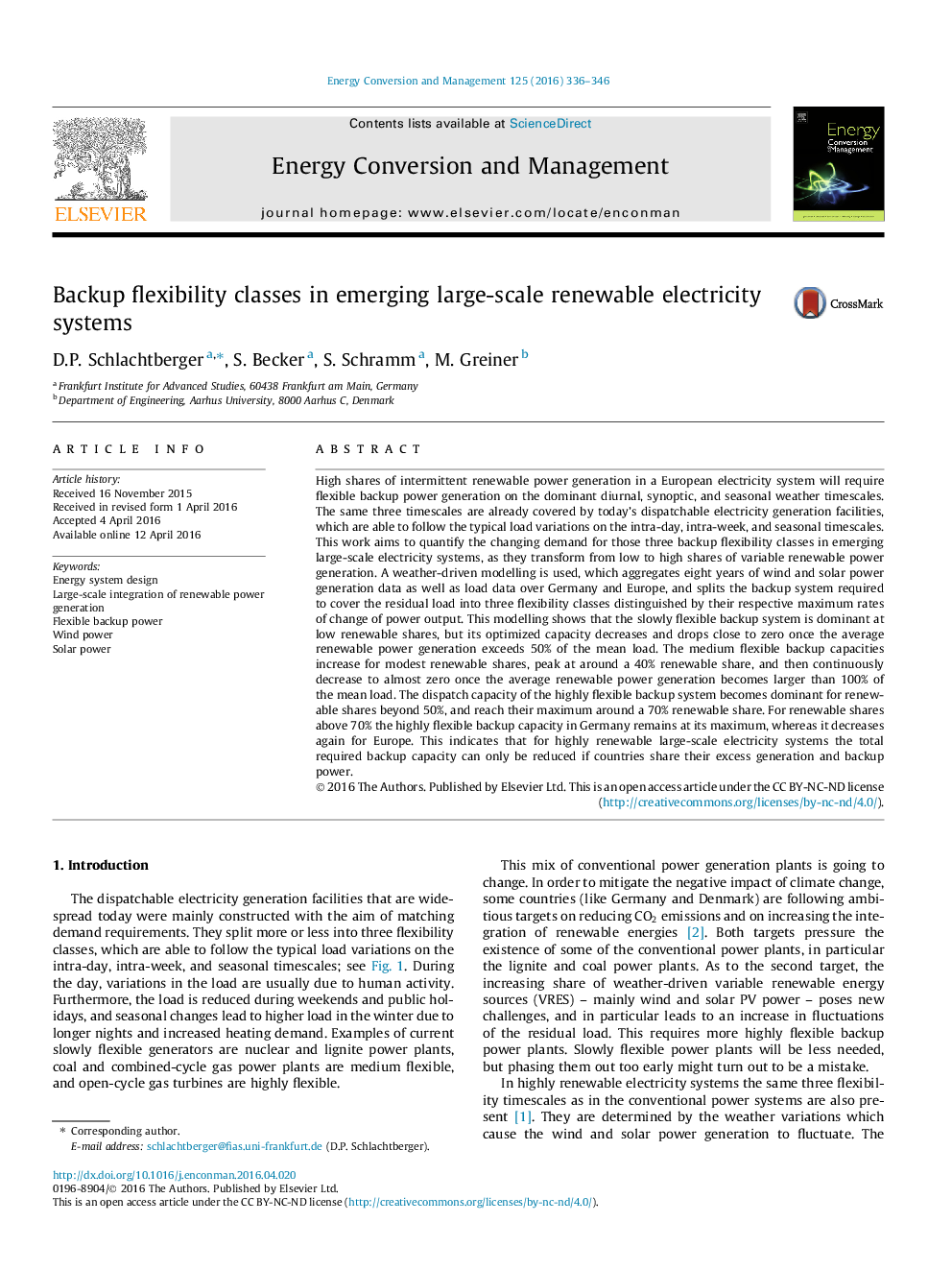| کد مقاله | کد نشریه | سال انتشار | مقاله انگلیسی | نسخه تمام متن |
|---|---|---|---|---|
| 5013288 | 1462837 | 2016 | 11 صفحه PDF | دانلود رایگان |
- Flexible backup demand in a European wind and solar based power system is modelled.
- Three flexibility classes are defined based on production and consumption timescales.
- Seasonal backup capacities are shown to be only used below 50% renewable penetration.
- Large-scale transmission between countries can reduce fast flexible capacities.
High shares of intermittent renewable power generation in a European electricity system will require flexible backup power generation on the dominant diurnal, synoptic, and seasonal weather timescales. The same three timescales are already covered by today's dispatchable electricity generation facilities, which are able to follow the typical load variations on the intra-day, intra-week, and seasonal timescales. This work aims to quantify the changing demand for those three backup flexibility classes in emerging large-scale electricity systems, as they transform from low to high shares of variable renewable power generation. A weather-driven modelling is used, which aggregates eight years of wind and solar power generation data as well as load data over Germany and Europe, and splits the backup system required to cover the residual load into three flexibility classes distinguished by their respective maximum rates of change of power output. This modelling shows that the slowly flexible backup system is dominant at low renewable shares, but its optimized capacity decreases and drops close to zero once the average renewable power generation exceeds 50% of the mean load. The medium flexible backup capacities increase for modest renewable shares, peak at around a 40% renewable share, and then continuously decrease to almost zero once the average renewable power generation becomes larger than 100% of the mean load. The dispatch capacity of the highly flexible backup system becomes dominant for renewable shares beyond 50%, and reach their maximum around a 70% renewable share. For renewable shares above 70% the highly flexible backup capacity in Germany remains at its maximum, whereas it decreases again for Europe. This indicates that for highly renewable large-scale electricity systems the total required backup capacity can only be reduced if countries share their excess generation and backup power.
Journal: Energy Conversion and Management - Volume 125, 1 October 2016, Pages 336-346
